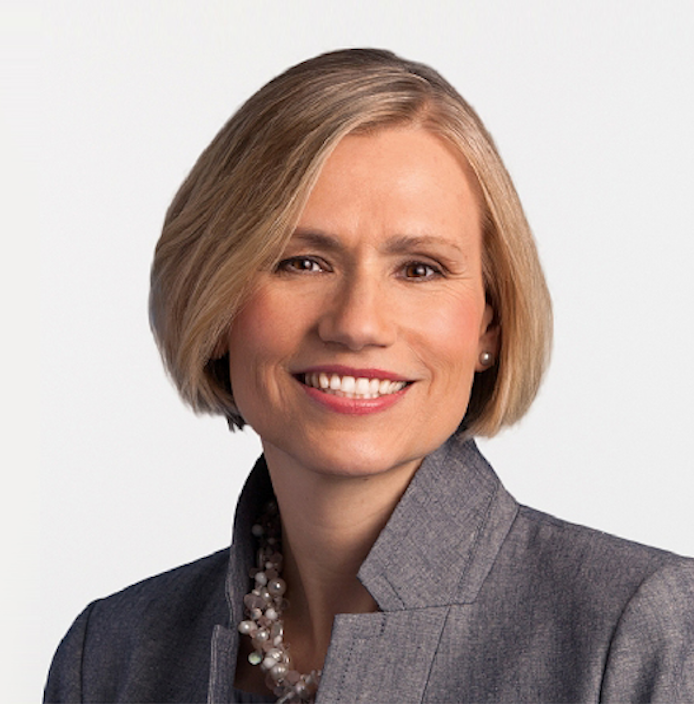by Kurt Reiman, Blackrock

Kurt Reiman, Chief Investment Strategist for BlackRock Canada, answers investor questions about rising interest rates and the recent market swoon, and provides a roadmap for navigating the volatility.
Q. Markets, on the whole, have been lower since the U.S. Federal Reserve confirmed higher interest rates ahead. Do you think investors should be worried about higher interest rates even though the North American economies seem to be growing strongly?
A. Prepared, but not necessarily worried. Higher short-term interest rates create competition for capital and partly explains why global equities have failed to keep pace with strong earnings growth. If falling discount rates boosted forward price-to-earnings multiples, it would seem reasonable to expect the opposite to be true when rates are rising. This, however, is only part of the story.
Long-term yields are also rising, but so far this reflect a solid economic backdrop, which is generally supportive of earnings, and therefore equities. When higher rates reflect inflation concerns and credit risks, that’s when equity investors should be concerned. But so far this hasn’t been the case. Therefore, we continue to hold a risk-on stance favoring stocks over bonds, and we prefer the U.S. for its strong economic and earnings growth and emerging market equities for its improving profitability and attractive valuations.
There’s another reason why higher rates are potentially concerning for equity investors: a shift from negative to positive correlations between stocks and bonds – at a time when both markets are weaker – removes an important source of diversification.
For much of the post-crisis period, stocks and bonds moved in opposite directions. Bonds were a natural hedge in the portfolio that would mitigate losses when equities lost value. While bonds may have been well bid during the darkest hours of the recent equity sell off, much of the weakness in global equities this year has occurred alongside declines in sovereign bonds.
Investors are now looking for a good natural hedge to provide resilience. We think the shorter-maturity segment of the bond market offers opportunity because it reflects some of the expected future normalization of monetary policy already, is less interest rate sensitive than longer maturities and offers a positive yield net of inflation. This is something we haven’t seen in the bond market in quite some time and gets back to my first point on the competition for capital present in the bond market.
Q. Do you think we could see another big pullback in the markets soon? Would that be because of higher interest rates?
A. We’re longer-term investors who look beyond the next few weeks and months. Momentum reversals and changes in leadership are common features in bull markets. They’re even quite healthy and normal. The extended period without a sharp drawdown coming into 2018 was more the exception than the rule. We think returns in equities will be driven by strong earnings growth and dividends, but we expect little contribution from multiple expansion. What could keep multiples from expanding? Higher interest rates seems like a good candidate, but trade frictions, evidence of margin pressure, and other geopolitical developments could likewise keep equities on the back foot. These uncertainties have factored into our focus on building resilient portfolios, which explains our preference for shorter-maturity bonds and a focus on quality within the equity market (higher return on equity, low leverage measures).
Q. Do you think policymakers in the U.S. and Canada could put the brakes on rising interest rates sooner than expected if there’s more volatility in markets ahead?
A. The Federal Reserve and the Bank of Canada are closing in on the neutral policy rate – one that is neither accommodative nor restrictive – with each successive rate hike. We expect three more rate hikes from the Federal Reserve over the next year, and two more over the same time period from the Bank of Canada, including one on October 24.
Central bankers are following a wide assortment of indicators about the state of the real economy to ensure they don’t overstep. There is evidence that the interest-rate sensitive segments of the economy, such as autos and housing, are beginning to feel the pinch from higher debt-service costs. There is also little evidence that inflation will spike given the prevalence of the tech-driven goods disinflation trend that is now well entrenched. Central banks will continue to follow financial conditions, and stock markets are a key ingredient to these measures, but there are many other factors to weigh when setting the course for monetary policy and that may warrant a pause in the normalization of interest rates next year.
Q. What else do you think is keeping investors on the sidelines or has created caution in the markets?
A. Trade frictions, tariffs, higher oil prices, rising wages, technological disruptions, higher interest costs and worries about a broad range of geopolitical tensions – at varying points and degrees throughout the year but especially today – have made investors nervous about earnings decelerating because of fading economic stimulus and also because of lower margins.
Q. Many are saying rising U.S. bond yields are pointing to a looming recession. What do you think?
A. Many investors are using nearly every directional shift in U.S. bond yields to justify the narrative that a recession is near. It wasn’t that long ago when a flattening yield curve, lower interest rates and fears of an impending inversion were the basis for recession fears. Now, rising rates and a steeper curve are causing the same anxiety. We have long held that the next recession is not imminent, and we currently expect upside revisions to consensus estimates in the U.S. and Canada – not downgrades. It’s true that higher interest rates raise debt service costs and penalize rate-sensitive economic sectors, but it doesn’t necessarily mean a recession is around the corner. This is especially true when the rise in rates reflects better – or at least stable – economic conditions, as has been the case over the past year.
Kurt Reiman is a Managing Director and BlackRock’s Chief Investment Strategist for Canada. Kurt is a regular contributor to The Blog in Canada.
This material is not intended to be relied upon as a forecast, research or investment advice, and is not a recommendation, offer or solicitation to buy or sell any securities or to adopt any investment strategy. The opinions expressed are as of the date indicated and may change as subsequent conditions vary. The information and opinions contained in this post are derived from proprietary and nonproprietary sources deemed by BlackRock to be reliable, are not necessarily all-inclusive and are not guaranteed as to accuracy. As such, no warranty of accuracy or reliability is given and no responsibility arising in any other way for errors and omissions (including responsibility to any person by reason of negligence) is accepted by BlackRock, its officers, employees or agents. This post may contain “forward-looking” information that is not purely historical in nature. Such information may include, among other things, projections and forecasts. There is no guarantee that any of these views will come to pass. Reliance upon information in this post is at the sole discretion of the reader.
© 2018 BlackRock Asset Management Canada Limited. All rights reserved. BLACKROCK is a registered trademark of BlackRock, Inc., or its subsidiaries in the United States and elsewhere. Used with permission.
ICR1018C-638022-1979068















